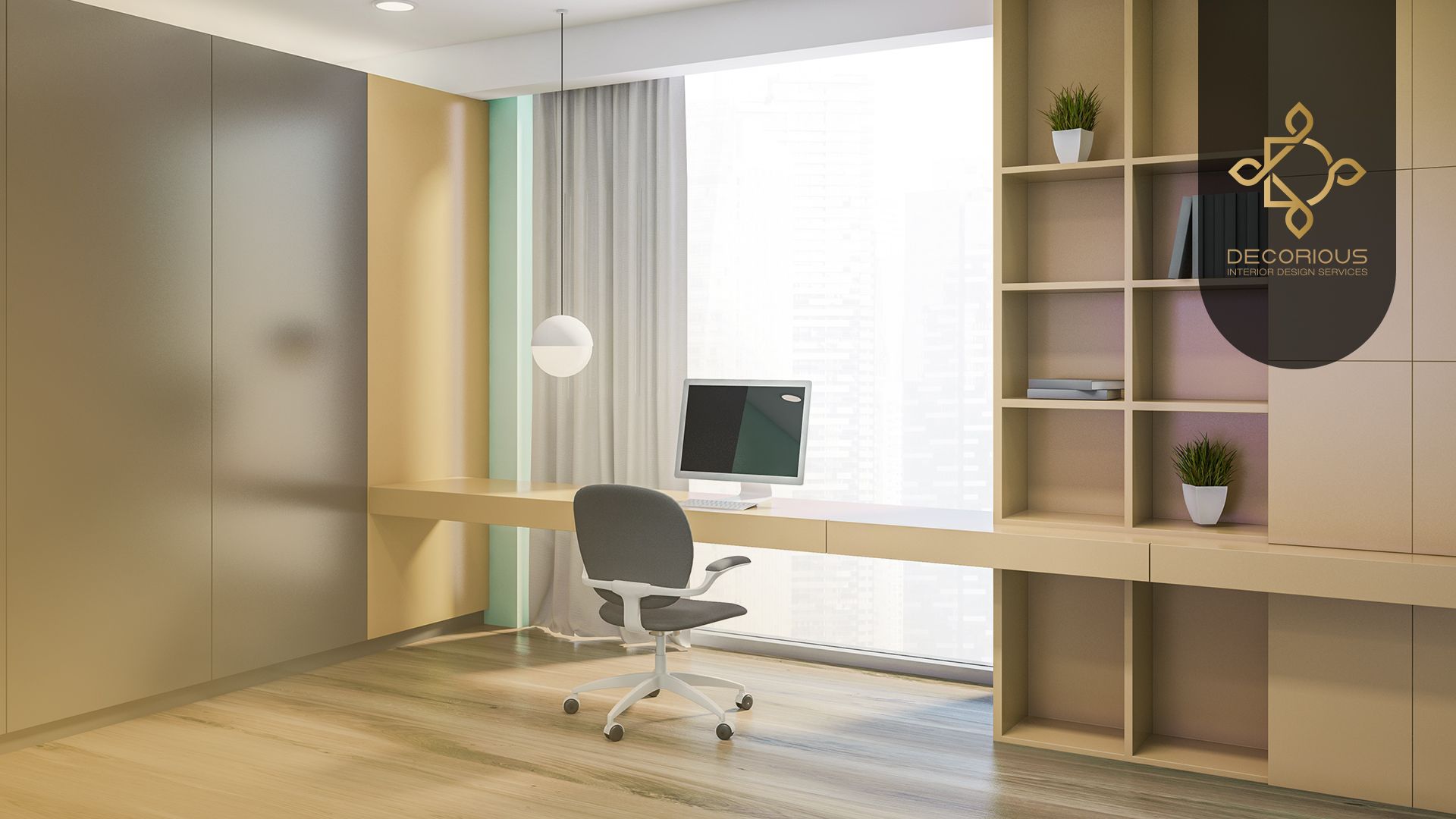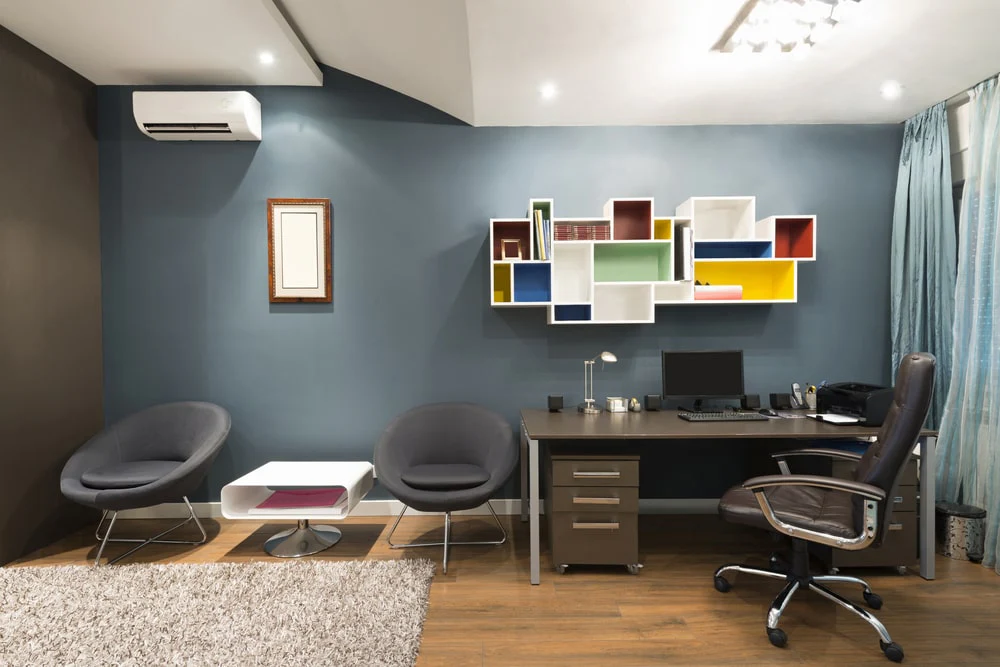Blog
Transform Any Room into the Perfect Study Space
Creating a perfect study space doesn’t require an entire room dedicated to it. With the right strategies, you can transform any corner or underutilized space into a productive, focused environment. Whether you’re studying for exams, working from home, or simply need a quiet area to get work done, transforming your room into a study zone is all about optimizing the space and setting the right atmosphere. Here’s how to turn any room into the perfect study space that promotes concentration, comfort, and creativity.

1. Choose the Right Location in the Room
When turning any room into a study space, location is key. Find a spot that’s quiet and away from distractions. Ideally, this should be an area where you can set up comfortably without being disturbed.
- Find a corner: If you don’t have a whole room to dedicate, identify a quiet corner where you can set up your study desk. Even a small nook can become a productive space with the right furniture and layout.
- Near a window: If possible, choose a spot near natural light. Natural light is known to improve focus and mood. A spot near a window with a pleasant view can help keep you energized and less likely to get distracted.
- Minimize distractions: Avoid areas near TVs, kitchens, or high-traffic zones where noise and interruptions are frequent. If you share a space, consider using room dividers or curtains to create a private study zone.
2. Pick the Right Furniture
Your furniture plays a major role in how comfortable and productive your study space will be. Make sure the furniture is functional, ergonomic, and space-efficient.
- Study Desk: Choose a desk that fits the size of the room but still provides ample workspace. Look for desks with storage drawers or shelves to keep your study materials organized and within reach. If space is limited, consider a wall-mounted desk or a foldable desk.
- Comfortable Chair: Invest in a comfortable, ergonomic chair that supports good posture. A chair with adjustable height, lumbar support, and armrests will help prevent back pain and make it easier to sit for long study sessions.
- Storage Solutions: Incorporate shelving, file cabinets, or drawer organizers to store books, stationery, and study materials. Keeping your study area clutter-free helps you focus and find what you need quickly.
3. Declutter the Space
A cluttered environment can hinder concentration and create unnecessary stress. Organizing the space will not only help you stay focused but also improve your overall productivity.
- Minimalist Approach: Keep only the essentials on your desk: a notebook, a computer or tablet, pens, and other tools needed for your study session. Store anything not in use, like textbooks, stationery, or office supplies, in drawers or on shelves.
- Organizing Tools: Use organizers like trays, baskets, or boxes to keep your materials neatly arranged. Consider using desktop organizers to separate your stationery and paperwork to prevent items from getting mixed up or lost.
4. Lighting is Key
Lighting can significantly impact your ability to focus and stay alert while studying. It’s essential to have proper lighting in your study area to avoid eye strain and maintain a productive environment.
- Natural Light: If possible, position your desk near a window to take advantage of natural light. Natural daylight improves concentration, reduces fatigue, and boosts mood. However, make sure you position the desk in a way that minimizes glare on screens.
- Task Lighting: A good desk lamp is essential for focused tasks. Choose a lamp that provides enough light without being too harsh. Adjustable lamps with brightness control allow you to customize the lighting based on your needs.
- Ambient Lighting: In addition to task lighting, consider adding ambient lighting to create a cozy, inviting atmosphere. Soft, warm lighting can help set a relaxing mood, reducing stress and keeping you calm during intense study sessions.
5. Create an Ergonomic Setup
An ergonomic setup will not only keep you comfortable while studying but also reduce the risk of strain and injury. A well-designed study space that encourages good posture will help you stay focused and avoid discomfort.
- Desk Height: Ensure your desk is at a comfortable height so that your elbows are at a 90-degree angle when typing or writing. If you work at a computer, the top of your screen should be at or just below eye level.
- Chair Adjustments: Your chair should support your spine and encourage a neutral sitting position. Keep your feet flat on the floor, and adjust the chair height so your knees are aligned with your hips.
- Keyboard and Mouse Placement: Keep your keyboard and mouse within arm’s reach, at a height that allows your wrists to remain neutral while typing. A wrist rest or keyboard tray can reduce strain on your wrists.
6. Add Personal Touches for Motivation
A study space should inspire you to work and keep you motivated, so adding a few personal touches can make it feel more inviting and enjoyable.
- Inspiring Decor: Add motivational posters, art prints, or personal photos that inspire you. The right decor can keep you motivated during tough study sessions.
- Plants: Adding a few plants to your study area can improve air quality, reduce stress, and add some vibrancy to your space. Low-maintenance plants like succulents or air plants are ideal for study areas.
- Stationery: Organize your stationery in a way that’s aesthetically pleasing, like using decorative pen holders or unique organizers. The visual appeal of your supplies can make studying more enjoyable.
7. Organize Your Study Materials
Having an organized system for your study materials is crucial for staying on top of your work. Without a clear organization system, it’s easy to waste time searching for notes or assignments.
- Label Everything: Label your binders, folders, and boxes so you can easily identify where each subject’s materials are stored. A clear filing system can save you time and help you stay organized.
- Digital Organization: In addition to physical materials, make sure your digital study files are organized. Use cloud storage solutions like Google Drive or Dropbox to keep your documents accessible and backed up.
- Use a Planner: A study planner or digital calendar can help you manage deadlines, track assignments, and organize your study sessions. Break tasks into smaller, manageable pieces to stay on track.
8. Control Noise Levels
Noise can be a significant distraction, especially if you’re studying in a shared space or a busy area. To maintain focus, it’s important to control the noise levels in your study space.
- Noise-Canceling Headphones: If you’re in a noisy environment, noise-canceling headphones can help you block out distractions and stay focused. Listening to instrumental music or white noise can also improve concentration.
- Use Rugs and Soft Furnishings: If you’re in a room with hard floors or a lot of echo, consider adding a rug, curtains, or soft furnishings to absorb sound and reduce noise.
- Create Quiet Hours: If possible, establish designated study times when others in the house can avoid creating noise. Communicating with roommates or family members about your study schedule can help minimize distractions.
9. Optimize Temperature and Ventilation
A comfortable temperature and fresh air are important for maintaining focus and staying alert. If your study space is too hot, cold, or stuffy, it can make it harder to concentrate.
- Ventilation: Ensure your study area is well-ventilated by opening windows or using a fan. Fresh air promotes better focus and alertness.
- Temperature Control: Try to maintain a comfortable temperature in your study area. If you’re working in a room that’s too warm, consider using a fan or air conditioner. A comfortable environment will help you focus for longer periods.
10. Maintain a Routine
Having a designated study area is only effective if you maintain a study routine. A regular schedule signals your brain when it’s time to focus, making it easier to get into the right mindset.
- Set Study Hours: Establish regular study hours and stick to them. Consistency helps build discipline and creates a habit of focusing during your designated study times.
- Break Time: Incorporate breaks into your study sessions. Follow techniques like the Pomodoro method (study for 25 minutes, then take a 5-minute break) to stay refreshed and focused.

Conclusion
Transforming any room into a productive study space is all about optimizing the environment for focus, comfort, and organization. By choosing the right location, decluttering, investing in ergonomic furniture, controlling lighting and noise, and adding personal touches, you can create a space that encourages deep concentration and efficient work. With these steps, any room in your home can become the perfect study area, helping you stay focused, motivated, and productive.


